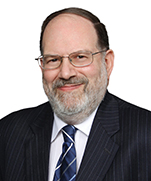As expected, today, the Federal Open Market Committee of the Federal Reserve (FOMC) decided to raise the federal funds rate by one-quarter of a percentage point ( .25%) to a range of .75% to 1%. The federal funds rate, which is the rate that banks charge each other for overnight loans, is a key benchmark interest rate that impacts interest costs for borrowers and interest payments for savers.
The rate increase, while modest, will lead to higher borrowing costs for debt without fixed rates such as credit cards, home equity lines of credit, small business loans, many student loans and adjustable rate mortgages. As Fed Chair Janet Yellen and other FOMC members had signaled on several occasions that a rate increase was likely in March, and the recent jobs reports were positive, interest rates on fixed rate mortgages had already gone up recently in anticipation of the FOMC’s action and many observers believe that the FOMC’s rate increase has already been priced into the market. While many other factors including the pace of economic activity under President Donald Trump will also potentially have a huge effect on interest rates, the FOMC’s action is certainly a positive development for savers.
The increase–the second such increase in three months, the third in 15 months, and the first of the Trump presidency–is a continuation of the FOMC’s policy of gradual interest rate increases designed to move toward the FOMC’s target of 2% inflation without unduly inhibiting economic growth, a target that the committee projects will be achieved in 2018.
Every voting member of the FOMC voted for this increase except Minneapolis Fed President Neel Kashkari who preferred to maintain the existing target range set in December 2016 for the federal funds rate of .50% to .75%
In determining the timing and size of future adjustments to the target range for the federal funds rate, the Committee said that it will continue to assess realized and expected economic conditions relative to its objectives of maximum employment and 2 percent inflation.
The commentary from Fed members on economic conditions around the country, also released today in conjunction with the FOMC monetary policy statement, suggests a majority of the Board believes that there will be two more federal funds rate increases this year, while a minority of the Board members believes there will be three more such increases in 2017. If such rate increases continue to be 25 basis points each time, that would place the federal funds rate between 1.25% and 1.75% by the end of the year.

